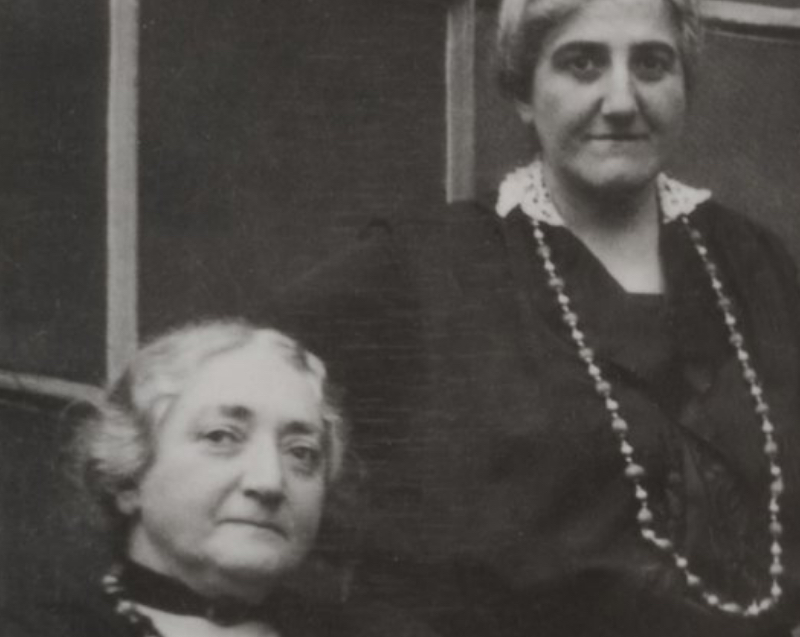RECALLING TWO BOLTON HILL SISTERS WHO ROCKED THE ART WORLD
No one thinks much about the century-old Marlborough Apartments, although the stately 11-story building at 1701 Eutaw Place is a fine piece of period architecture and one of the larger buildings in the neighborhood. Residents come and go, some likely oblivious to the history of the place.
Among its early residents were Dr. Claribel Cone on the sixth floor and her sister Etta Cone on the eighth. They were members of the city’s large, conservative Jewish community, daughters of Herman and Helen Cone, a Bavarian family that immigrated to America in 1871. The family prospered with a wholesale grocery business in Tennessee and the two daughters became well-schooled and world travelers at a time when most women led cramped lives.
They both graduated from Western Female High School. Claribel attended Women’s Medical College of Baltimore and graduated in 1890, to become a physician and pathologist. She worked in the pathology laboratory of the Johns Hopkins Medical School, but never practiced clinical medicine. It was Etta, less professionally focused, who begin acquiring art in 1898, with a decoration allowance of $300 given by a brother.
Traveling across Europe and hanging out in Paris with the writer Gertrude Stein and her brother, Leo in 1905, the Cone sisters became early acquirers of what was considered avant-garde work by then-unknown artists Pablo Picasso, Henri Matisse, Paul Cezanne and others. Stein took credit for introducing them to Picasso, according to Bolton Hill historian Frank Shivers Jr.
Stein wrote about Etta and Claribel in Two Women: There were two of them, they were sisters, they were large women, they were rich, they were very different one from the other one. The two Cones never married.
Etta made acquisitions to help up-and-coming artists like Matisse, Picasso, and also students of the Maryland Institute College of Art. She also bought at low prices from the Steins, who were perpetually in need of money. Over time the sisters filled their large apartments with great art and sculpture packed into every corner and wall space of every room.
The Cone Collection includes Matisse‘s Blue Nude (1907) and Large Reclining Nude (1935), Paul Cézanne‘s Mont Sainte-Victoire Seen from the Bibémus Quarry (c. 1897), Paul Gauguin‘s Woman of the Mango (1892), Pablo Picasso‘s Mother and Child (1922). The Cone sisters collected 42 of Matisse’s oil paintings, 18 sculptures, 36 drawings, 155 prints, as well as 250 drawings, prints, and copper plates from Matisse’s first illustrated book, Poésies de Stéphane Mallarmé. Other Matisse works they acquired were the 1917 Woman in a Turban (Lorette), Seated Odalisque, Left Knee Bent, Ornamental Background and Checkerboard (1928), and Interior, Flowers and Parakeets (1924).
No wonder Henry Matisse came calling at the Marlborough in November 1930, a year after the death of Claribel. The 500 works by Matisse in the Cone Collection at the Baltimore Museum of Art today form the largest and most representative group of his works of art in the world. Claribel willed her collection to Etta to be given to the BMA “if the spirit of appreciation of modern art in Baltimore should improve.”
On Etta’s death in 1949, the museum received most of the collection, although some pieces are at the University of North Carolina Weatherspoon Museum in Greensboro, NC, where the family fortune was made. The collection today is valued at more than $1 billion. The two sisters are buried at Druid Ridge Cemetery in Pikesville.
Women’s History Month had its origins as a national celebration in 1981 when Congress passed Pub. L. 97-28 which authorized and requested the President to proclaim the week beginning March 7, 1982 as “Women’s History Week.”
–Bill Hamilton

